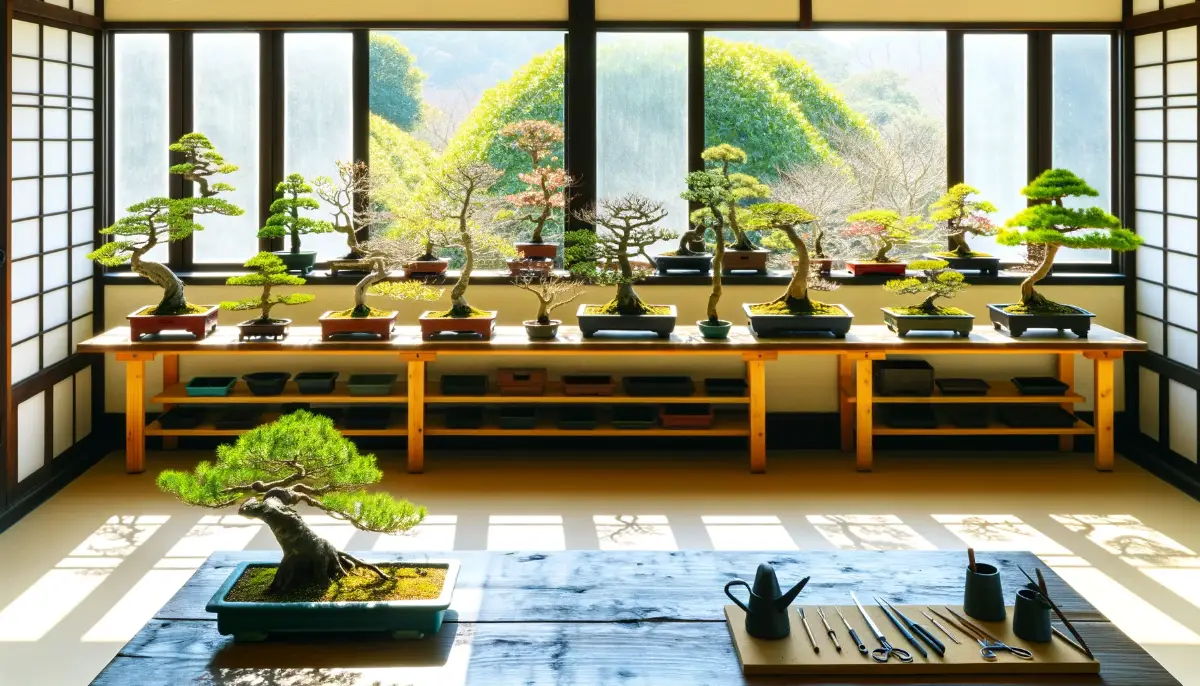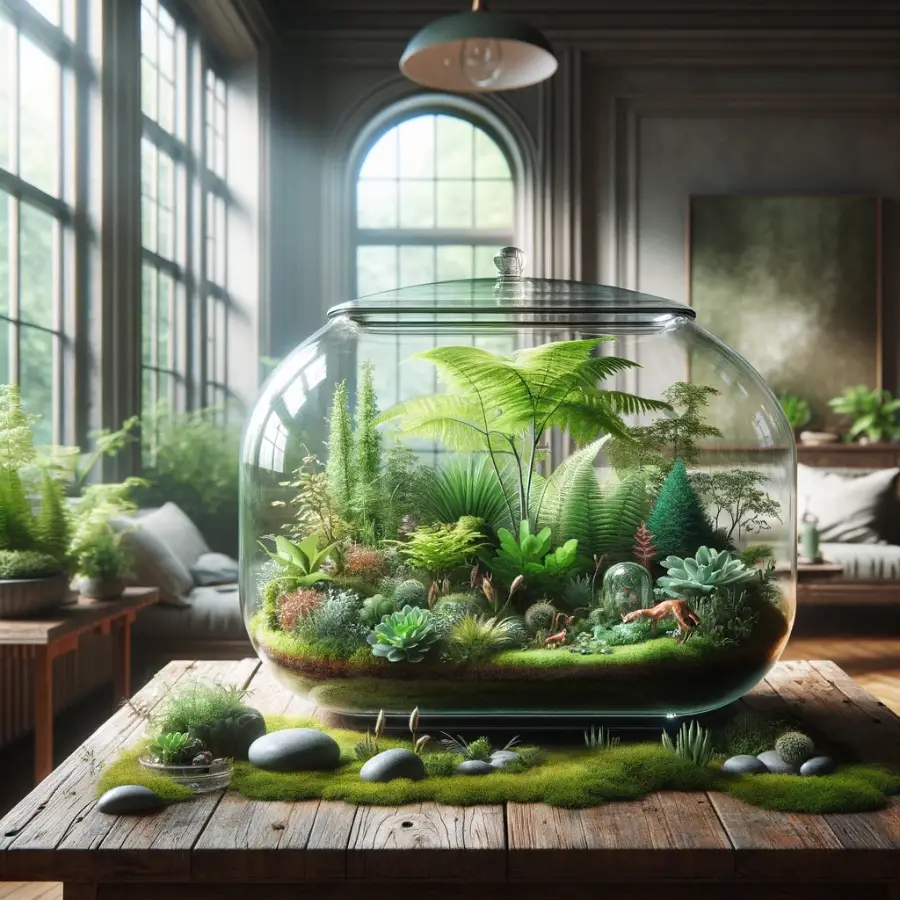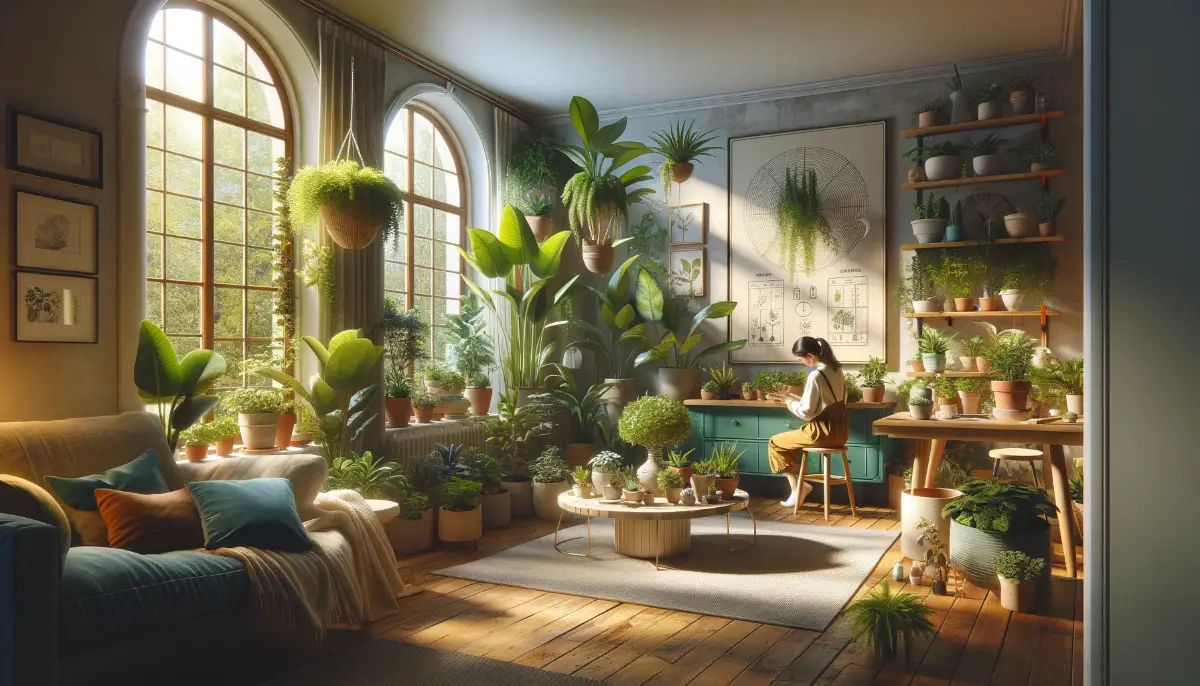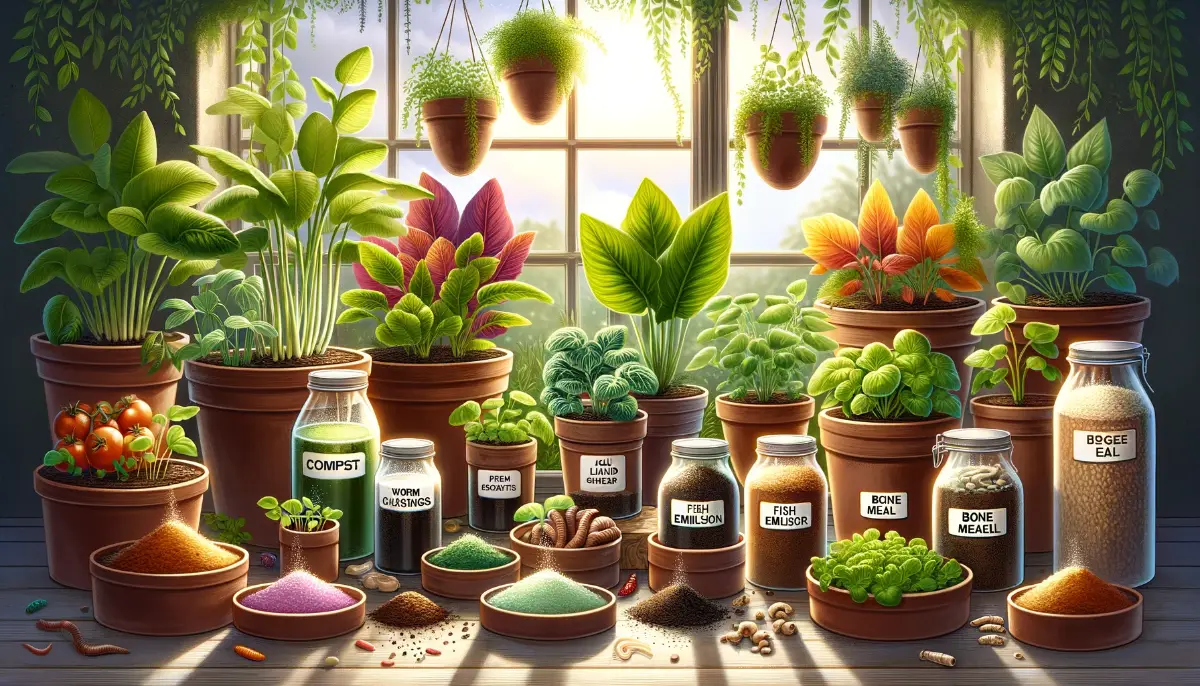Bonsai trees, with their serene beauty and miniature stature, capture the essence of nature’s splendor in a small pot. Cultivating and caring for these living art forms at home can be a deeply rewarding experience. Here’s everything you need to know to get started on your bonsai journey.
Understanding Bonsai Tree
Bonsai, a Japanese art form that dates back over a thousand years, involves growing and shaping trees to replicate miniature versions of nature’s giants. This practice emphasizes harmony, balance, and the beauty of simplicity.
Origin and History
The art of bonsai originated in China over a thousand years ago before spreading to Japan, where it was refined and popularized. In Japanese, “bonsai” literally means “planted in a container.” This art form focuses on long-term cultivation and shaping of one or more small trees growing in a container.
Types of Bonsai
Bonsai trees can come from almost any perennial woody-stemmed tree or shrub species that produces true branches and can be cultivated to remain small through pot confinement with crown and root pruning. Some popular types include Juniper, Maple, Pine, and Ficus. Each species has its unique care requirements, growth patterns, and aesthetic appeal.
Bonsai Styles
There are several classic styles in bonsai, each aiming to represent natural tree forms in miniature. Some of these styles include:
- Chokkan (Formal Upright): A straight and upright trunk.
- Moyogi (Informal Upright): A trunk with gentle curves.
- Shakan (Slanting): The tree leans to one side as though buffeted by wind.
- Kengai (Cascade): The tree cascades below the level of the pot, mimicking a tree growing over the edge of a cliff.
Key Techniques for Cultivating Bonsai Trees
Selecting Your Bonsai Tree
Your bonsai journey begins with selecting the right tree. Consider starting with species known for their resilience and suitability for bonsai cultivation, such as Juniper, Ficus, or Maple. Nursery stock or prebonsai materials are great for beginners, providing a foundation to shape and nurture.
Shaping and Styling Techniques
Shaping and styling bonsai trees is both an art and a science, allowing you to create a miniature representation of nature’s beauty. Here are some of the key techniques used in the shaping and styling of bonsai trees, inspired by various sources and experts in the field.
Pruning : Pruning is the most fundamental technique in bonsai shaping, used to control the shape and the size of the tree. It involves removing unnecessary branches, leaves, and roots to promote healthy growth and to maintain the desired form. Pruning can be divided into two types:
- Maintenance Pruning: Keeps the tree’s shape and controls growth.
- Structural Pruning: More significant cuts to change the tree’s structure, often done in the dormant season.
Wiring : Wiring is a technique used to direct and shape the tree’s growth by wrapping wire around the branches. This allows you to bend and reposition branches to achieve your desired shape. There are two main types of wire used in bonsai:
- Anodized Aluminum: More flexible, easier to use, especially for beginners and for trees with soft bark.
- Annealed Copper: Stronger hold, used for coniferous trees and larger branches.
The key to successful wiring is to apply the wire firmly but gently, avoiding damage to the tree. The wire typically remains on the tree for several months until the branch has set in its new position.
Leaf Trimming : Leaf trimming, or defoliation, involves selectively removing leaves to reduce leaf size and to encourage the growth of smaller, more numerous leaves. This technique is usually applied to deciduous bonsai trees during the growing season to enhance their appearance and to improve light penetration and air circulation throughout the tree.
Clamping : Clamping is a more advanced technique used to bend thick branches or trunks that cannot be shaped with wiring alone. This method uses mechanical devices, like clamps or jacks, to apply pressure and gradually bend the wood to the desired shape. It’s a powerful technique but must be used with care to avoid damaging the tree.
Grafting : Grafting involves adding new branches or roots to the bonsai by attaching material from another plant of the same species. This technique is used to add foliage to areas of the bonsai that are lacking, to change the tree’s shape, or to introduce new characteristics, such as leaf color or size.
Jin and Shari : Jin and Shari are techniques used to simulate age and natural wear in a bonsai tree. Jin involves stripping the bark from a section of branch or trunk, creating the appearance of a deadwood feature. Shari is similar but involves removing bark from areas of the trunk, mimicking natural damage and giving the tree a more rugged, aged appearance.
Choosing a Style
Selecting a bonsai style is a crucial first step in shaping your tree. The style should reflect the natural growth tendencies of the plant material and might be inspired by natural tree forms. Some popular bonsai styles include Formal Upright (Chokkan), Informal Upright (Moyogi), Slanting (Shakan), and Cascade (Kengai).
Shaping and styling bonsai trees require patience, practice, and a deep respect for the tree’s natural growth. Each technique offers a unique way to interact with your bonsai, guiding its growth while celebrating its natural beauty.
As you gain experience, you’ll develop a deeper understanding of how to use these techniques to create your own living art.
Bonsai Tree Care and Maintenance
Caring for a bonsai tree involves meticulous attention to its environment, watering, feeding, pruning, and repotting routines. These miniature trees require consistent care to thrive, but with the right approach, they can become stunning representations of nature’s grandeur. Here are essential tips and guidelines for bonsai tree care and maintenance.
Watering
Watering is arguably the most crucial aspect of bonsai care. The goal is to ensure the soil remains moist but not waterlogged. Over-watering can lead to root rot, a common problem for bonsai trees. Conversely, under-watering can dehydrate and weaken your tree.
The frequency of watering will depend on several factors including the species of the tree, the size of the pot, the type of soil, and the climate. A general rule is to water when the top layer of soil starts to feel dry.
Employ a gentle watering technique, such as using a watering can with a fine nozzle, to avoid disturbing the soil and roots.
Lighting
Bonsai trees need sufficient light to photosynthesize and grow. Most species thrive in bright, indirect sunlight. If grown indoors, placing your bonsai near a south-facing window where it can receive ample light is ideal.
However, during the intense summer heat, it’s essential to protect your tree from harsh direct sunlight that can scorch its leaves.
Humidity and Temperature
Maintaining the right humidity level is vital, especially for indoor bonsai trees. You can increase humidity around your bonsai by placing it on a humidity tray filled with water and pebbles. It’s also important to keep your bonsai in an environment with stable temperatures, avoiding places with drafts or direct heat sources.
Feeding
Fertilizing your bonsai provides it with essential nutrients for growth. Use a balanced bonsai-specific fertilizer during the growing season, following the recommended frequency and dosage. It’s best to reduce feeding during the winter months when the tree’s growth naturally slows.
Pruning and Trimming
Pruning is essential for maintaining the shape of your bonsai and encouraging healthy growth. Structural pruning can be done during the dormant season, while maintenance pruning to remove unwanted growth can be done throughout the growing season. Regular trimming helps manage the shape of the tree and the size of the leaves.
Repotting
Bonsai trees need to be repotted periodically to ensure they don’t become root-bound and to replenish the soil’s nutrients. The frequency of repotting depends on the age and species of the tree but generally ranges from every two to five years.
Repotting is usually done in early spring, just before the growing season begins.
Pest and Disease Management
Keep an eye out for signs of pests or diseases, such as discolored leaves, sticky residue, or stunted growth. Early detection and treatment are key to managing these issues. Use organic treatments as necessary, always following the product instructions to avoid harming the tree.
Seasonal Care
Bonsai trees, like their full-sized counterparts, are subject to seasonal changes and have different needs throughout the year. Winter requires special attention, especially for outdoor bonsai, to protect them from freezing temperatures. Understanding the specific needs of your bonsai during each season is crucial for its long-term health and beauty.
Bonsai Tree Health and Troubleshooting
Maintaining the health of a bonsai tree involves regular observation, prompt identification of potential problems, and appropriate corrective actions. Despite your best care, bonsai trees can sometimes encounter issues. Here’s a guide to troubleshooting common bonsai health problems.
Yellowing Leaves
Yellow leaves can indicate several issues, including over-watering, under-watering, lack of nutrients, or even a natural part of the tree’s life cycle. First, evaluate your watering routine, ensuring the soil is neither too dry nor waterlogged. Consider if the tree might need fertilization, but also remember that deciduous trees naturally shed leaves seasonally.
Leaf Drop
Sudden leaf drop can be alarming and may be caused by a drastic change in the environment (such as moving the tree from outdoors to indoors), over-watering, or under-watering. Ensure your bonsai is placed in a stable environment with adequate light, and adjust your watering practices as needed.
Pests and Diseases
Common pests include spider mites, aphids, and scale insects. Signs of infestation include sticky residue on leaves, visible insects, and weakened growth. Diseases may present as discolored or spotted leaves. Treatment involves identifying the specific pest or disease and applying the appropriate insecticide, fungicide, or cultural practice, such as increasing air circulation or reducing leaf wetness.
Browning Leaves
Browning leaf tips or edges can result from low humidity, especially for indoor bonsai. Consider using a humidity tray and misting the leaves regularly. It can also be a sign of over-fertilization, so ensure you are following the recommended fertilization rates and schedules.
Weak Growth
If your bonsai shows signs of weak growth or stunted development, it could be due to inadequate light, insufficient nutrients, or root-bound conditions. Ensure the tree receives enough light, consider a balanced fertilizer application, and check if it’s time to repot the bonsai into a larger pot or refresh the soil.
Cracked or Damaged Bark
Physical damage or environmental stress can cause bark issues. Protect bonsai from harsh weather conditions and handle them carefully. If damage occurs, assess the extent and consider sealing large wounds to prevent disease entry.
Root Rot
Root rot, often a result of over-watering, is a serious condition that can be fatal if not addressed. Symptoms include mushy, black roots and a foul smell from the soil. Immediate action is required to remove the affected roots and repot the tree into fresh, well-draining soil.
Preventative Measures
- Regular Observation: Regularly inspect your bonsai for any signs of stress or disease.
- Quarantine New Plants: To prevent the spread of pests or diseases, quarantine new plants before introducing them to your collection.
- Proper Watering and Feeding: Over-watering and over-fertilizing are common mistakes. Follow guidelines specific to your bonsai species.
- Adequate Light: Ensure your bonsai receives the appropriate amount of light for its species, adjusting for seasonal changes.
- Cleanliness: Keep the bonsai and its surrounding area clean to reduce the risk of pests and diseases.
FAQs About Bonsai Trees
How often should I water my bonsai tree?
Watering frequency depends on various factors. Observe the soil’s moisture level and water when it feels slightly dry.
What is the best soil for bonsai trees?
A well-draining soil mix, often a blend of akadama, pumice, and lava rock, is ideal for most bonsai trees.
Can I keep my bonsai tree indoors all year round?
Subtropical species can live indoors with sufficient light, but temperate species benefit from seasonal changes outdoors.
How do I choose the right bonsai tree for a beginner?
Look for species known for their hardiness, such as Junipers, Ficus, or Chinese Elm.
When is the best time to repot my bonsai?
Early spring, just before the growing season begins, is ideal for repotting most species.
How can I tell if my bonsai is healthy?
A healthy bonsai has vibrant foliage, firm roots, and shows new growth during growing seasons.
Why are my bonsai leaves turning yellow?
Yellowing leaves can be a sign of over-watering, under-watering, or nutritional deficiencies.
Can bonsai trees live indoors?
Yes, certain species can thrive indoors if provided enough light and proper care.
How long do bonsai trees live?
With proper care, bonsai trees can live for decades, and some historical specimens are centuries old.
Is bonsai cultivation expensive?
Costs vary widely, depending on the species, tools, and materials. However, starting with basic materials and species can keep initial costs low.










